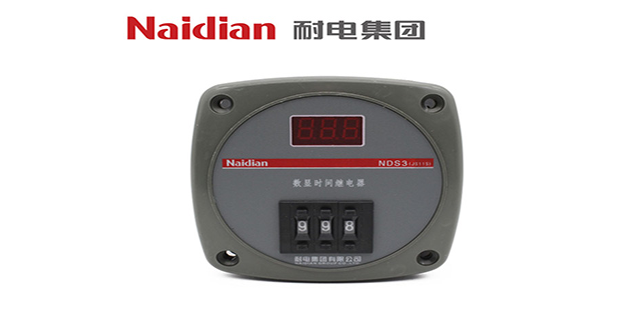What are the key points in selecting a time relay?
A time relay is an electrical component used in circuits with lower voltage or lower current to connect or disconnect circuits with higher voltage and higher current. It uses electromagnetic or mechanical principles to achieve time delay control.
Key points for selecting time relays:
Ⅰ. Control voltage:
It is clear whether the control voltage of the applied circuit system is AC or DC, as well as the specific voltage value, such as the common AC 220V, 110V, DC 24V, 12V, etc. Then select the coil voltage level of the time relay based on this to ensure that the time relay can work normally under this voltage.

Ⅱ. Time range:
Determine the required delay time range according to the actual control needs. Different application scenarios have very different requirements for delay time. For example, some simple equipment start and stop controls may only require a delay of a few seconds to a few minutes, while some complex industrial production processes may require a delay of several hours or even longer. When selecting a time relay, its maximum and minimum delay times should meet the requirements of actual applications.
Ⅲ. Functional requirements:
Delay mode: Time relays are divided into power-on delay type and power-off delay type. The power-on delay type starts timing after the relay coil is energized, and the contacts act after the set time is reached; the power-off delay type starts timing after the coil is de-energized, and the contacts act after the delay ends. Select the appropriate delay mode according to the control logic and actual needs of the circuit.
Additional functions: Some time relays also have other functions such as cycle timing and counting. If the system requires these additional functions, make sure that the selected time relay has the corresponding functions when selecting.
Ⅲ. Contact type and capacity:
Contact type: The contacts of the time relay are normally open (NO), normally closed (NC) and conversion (CO). The normally open contact is in an open state when the relay is not actuated, and is closed after actuation; the normally closed contact is the opposite. According to the logical needs of the control circuit, select the appropriate contact type combination.
Contact capacity: Determine the current, voltage and other parameters of the controlled circuit, and select a time relay whose contact capacity can meet the load requirements. If the contact capacity is too small, it may cause the contact to overheat, stick or even be damaged, affecting the normal operation of the system.
Ⅳ. Accuracy and stability:
Accuracy: For occasions with high requirements for delay accuracy, such as the control of precision instruments and equipment, automated production lines, etc., high-precision time relays should be selected. Generally, the accuracy of electronic time relays is relatively high, while the accuracy of traditional time relays such as air damping type is relatively low.
Stability: The time relay should maintain stable performance during long-term use and will not be affected by environmental factors such as temperature, humidity, and vibration. You can check the product's technical specifications or consult the manufacturer to understand its stability indicators.
Installation method: The time relay can be installed in plate-type, rail-type, and stand-alone ways. 1. According to the actual installation environment and space limitations, choose a suitable installation method for easy installation and maintenance.
Brand and quality: Choose products produced by time relay manufacturers with well-known brands and good reputations, the quality is more guaranteed, and the after-sales service is more reliable. 1. The credibility of the brand can be evaluated by consulting product reviews, consulting professionals, or referring to previous usage experience.
V. Environmental adaptability:
Temperature: If the temperature of the application environment varies greatly, a time relay that can work normally within the temperature range should be selected. For example, in a high temperature environment, some electronic components may degrade or be damaged, and high temperature resistant models need to be selected; in a low temperature environment, the performance of components such as batteries will also be affected, and products suitable for low temperature environments need to be selected.
Humidity and protection level: For time relays used in humid, dusty or corrosive gas environments, products with a higher protection level (such as IP65, IP67, etc.) should be selected to prevent moisture, dust and corrosive substances from entering the interior of the relay and affecting its normal operation.

